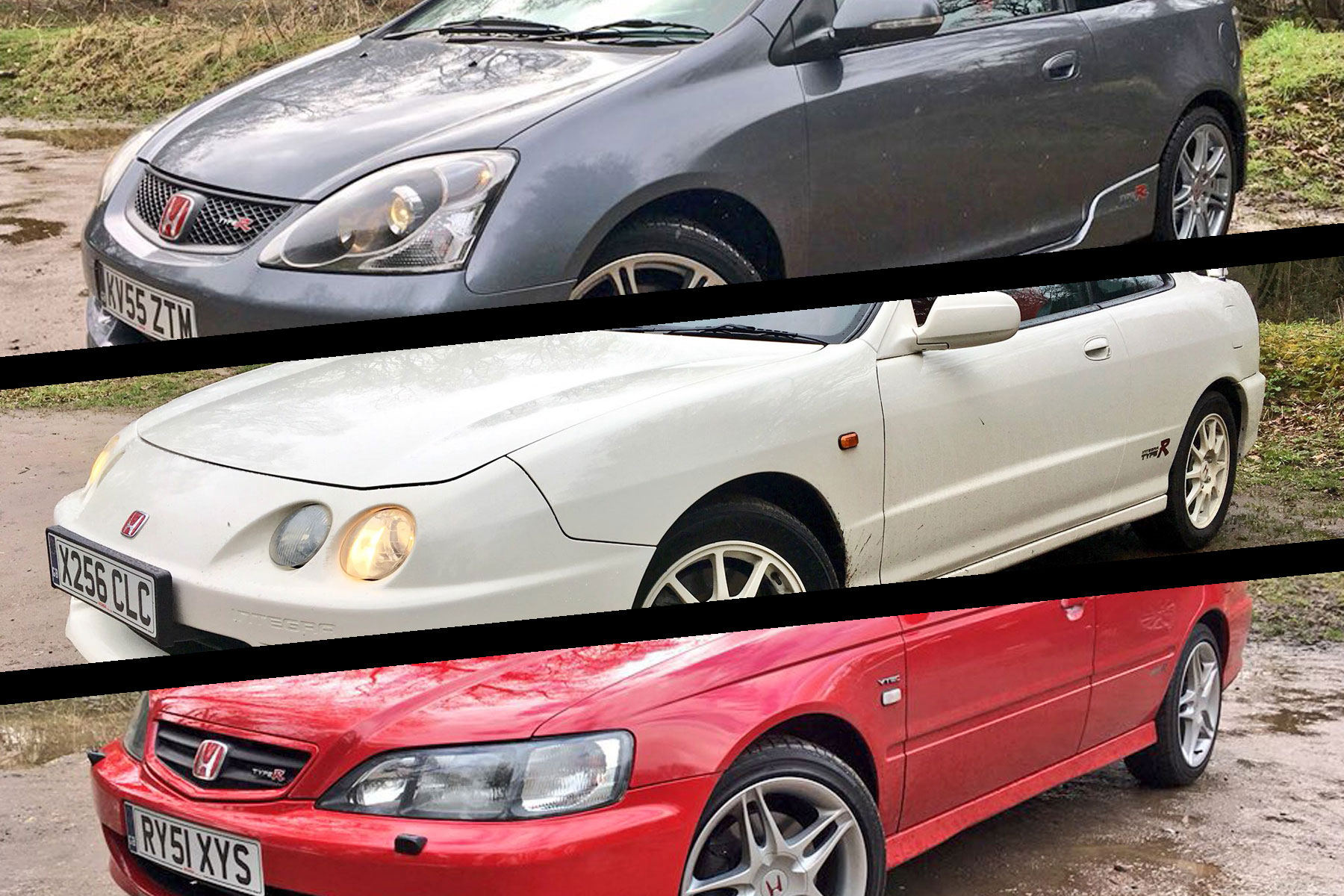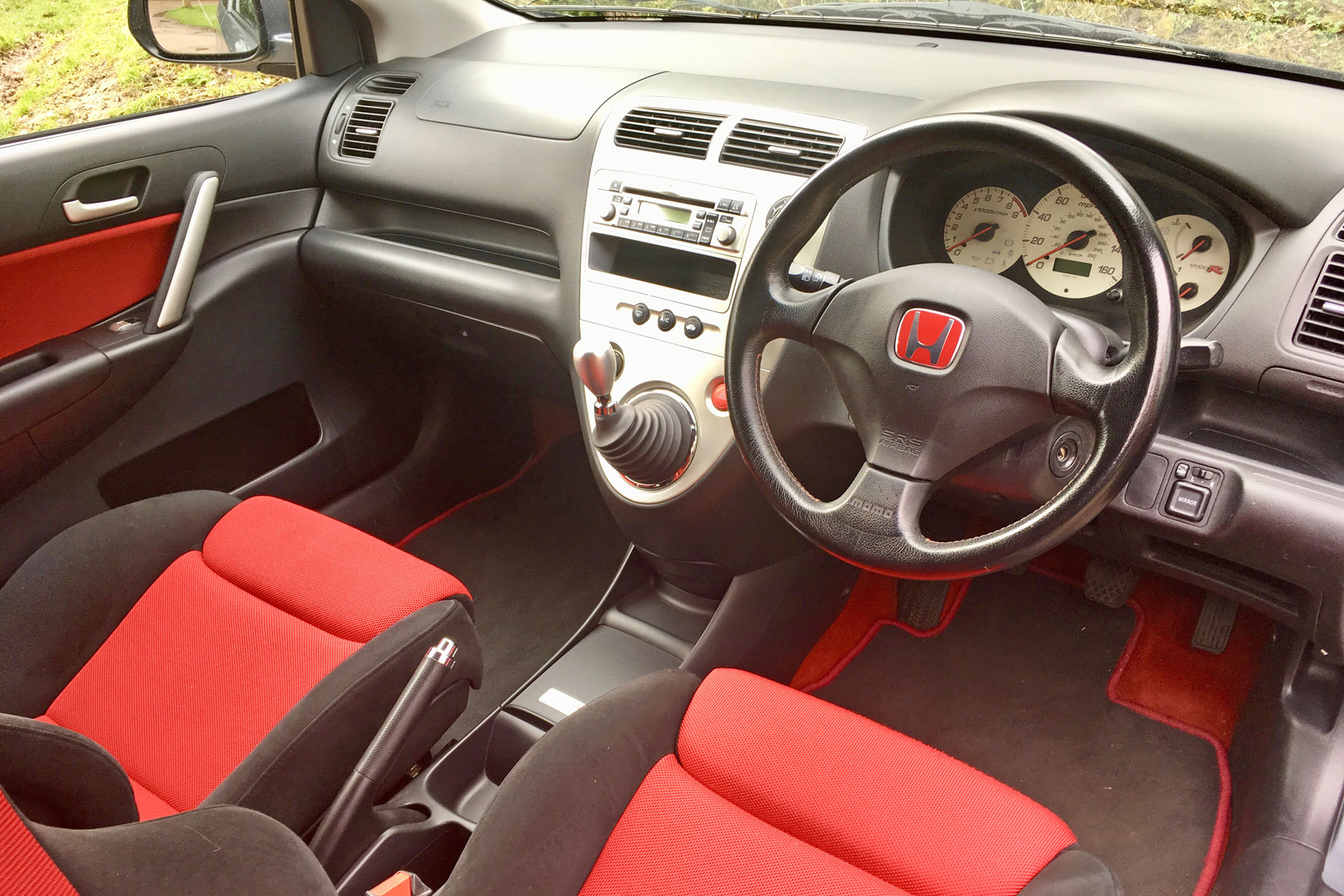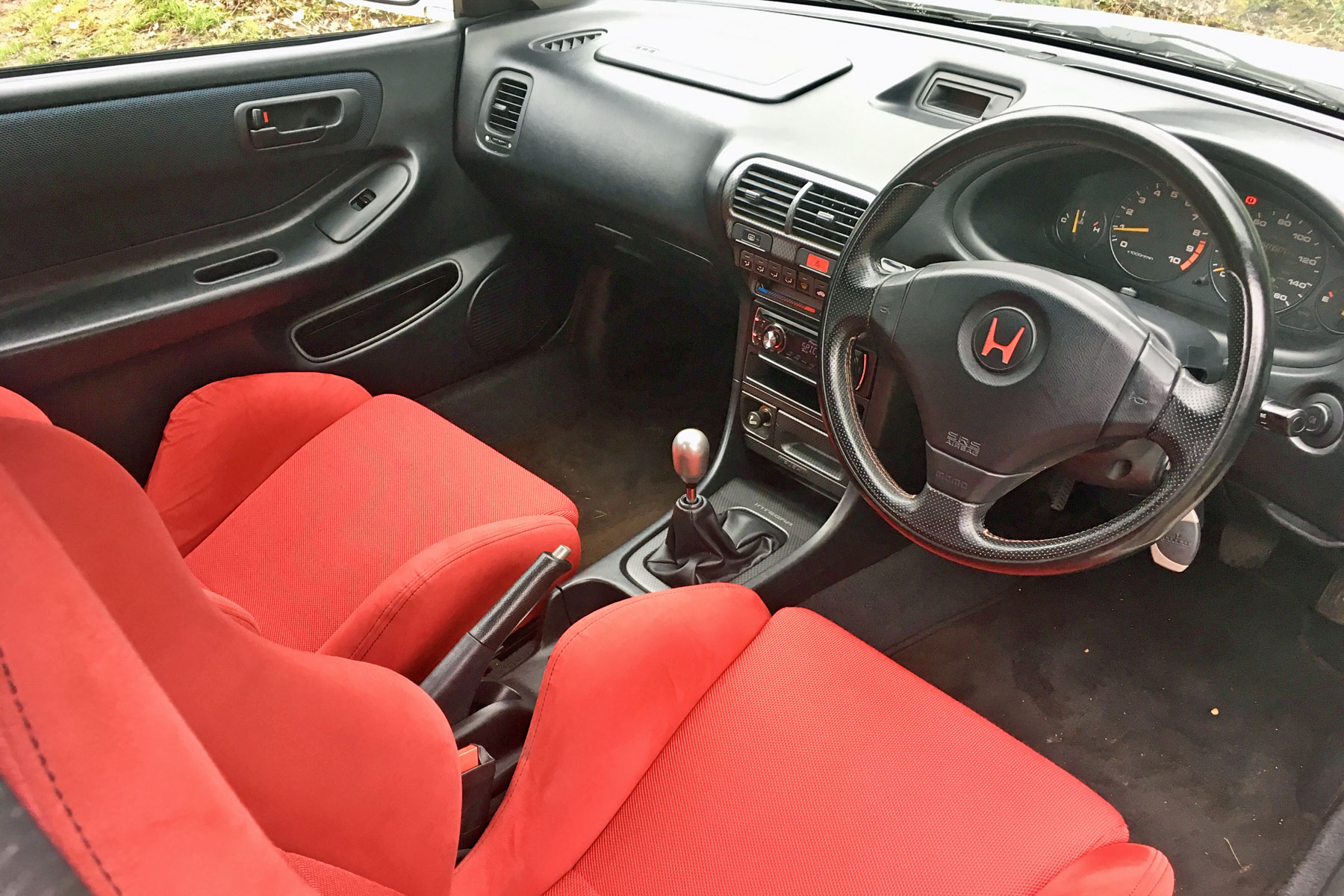
Excitement is building for the new Honda Civic Type R. Arriving in early 2023, it boasts a 330hp 2.0-litre turbo engine, a proper manual gearbox and the customary huge rear spoiler. However, as we’ll see, you don’t need the best part of £40,000 – UK prices haven’t been announced yet – to enjoy some Type R magic.
Honda’s red ‘R’ badge first became famous in the early 1990s, when the Japanese company launched a Type R version of its NSX supercar in Japan.
This sold in relatively small numbers, never officially made it to the UK and costs serious money if you can find one. So it’s the later, more affordable models we’ve focused on here.
These Type Rs are tuned-up versions of conventional cars: the Civic hatchback, Accord saloon and Integra coupe. All became performance car icons in their own right, with a cult following among car enthusiasts.
We drive all three hot Hondas back-to-back and come to a (fairly) definitive conclusion about which you should buy.
What is VTEC?
Before we get to the cars, a quick word about VTEC. You’ve probably heard the term – Honda aficionados refer to VTEC so frequently that it’s become an internet meme. If you’re not familiar, it stands for ‘Variable Valve Timing and Lift Electronic Control’.
Sounds complicated… and it kind of is. The camshaft in a car’s engine turns, pushing lobes (called cams) against valves, causing them to open and close, allowing air into the combustion chambers. Essentially, VTEC means a camshaft has two different sizes of cams: small ones for pottering around with maximum efficiency, and large ones for more air and extra performance.
As the revs climb, oil flows through the rocker shaft, sliding a pin that locks the low-RPM rocker arms to the higher-RPM rocker arms, meaning the valves open further and for a longer period of time. This results in a turbo-like effect for the engine, but only at high revs.
The advantage of VTEC is two distinct characters for the same engine. At low revs, it will drive like an eminently sensible car, providing good fuel economy. Increase the revs, though, and it goes berserk. The disadvantage is you have to work the engine hard to benefit from the best performance. But maybe that’s not such a bad thing…
Honda Civic Type R

The 2001-2005 Honda Civic Type R – internal codename ‘EP3’ – has arguably survived the boy racer stage and matured into a modern classic. Indeed, with prices from around £5,000, it’s already on an upward curve – the best cars are now beyond £10,000.
If you’re looking for a hot hatch that holds its value, the EP3 seems a good bet. And besides, once you’ve experienced the K20A2 naturally-aspirated VTEC engine hitting 8,000rpm, you won’t care about the money.

Before I get to that stage, I have to battle with London traffic. Yes, although I’m spending a day driving Type Rs, my base is close to the Hertfordshire town of Watford. And in stop-start slog, it’s difficult to see what all the fuss is about. The ride is firm, yet the engine doesn’t feel particularly eager.
I like the dash-mounted gear change, which feels slick and actually makes sense when you get used to it. Moving your hand the short distance from the steering wheel to the lever can save crucial tenths of a second. Ahem.
Eventually I reach countryside – with surprisingly empty B-roads – and pile on the revs. They build, with VTEC kicking in around 6,000rpm, and the car surges forward. It’s fun, admittedly, but not quite the excitement I expected – not helped, of course, by quickly catching up with other cars.

Part of the problem is the Civic packs ‘just’ 200hp, hitting its peak at 7,400rpm. And in a world of 300hp+ turbocharged hot hatchbacks, having to work hard to eke out two thirds of that doesn’t feel so thrilling.
Sure, the joy of driving a car like this isn’t all about power. But the EP3 doesn’t have a particularly sophisticated chassis, while the steering feels pretty lifeless. Maybe I’m being a bit harsh: its looks are growing on me, and the interior – with its figure-hugging Recaro seats – isn’t as dire as an old Japanese car might be.
Honda is also a byword for reliability, of course, so a Civic Type R should be painless to own. It’s just not the one for me.
Honda Integra Type R

When I was growing up, all the magazines lauded the ‘DC2’ Integra Type-R as the best-handling front-wheel-drive car ever. I was quite excited about finally driving one even if, after a go in the Civic, I was a tad worried about meeting a hero.
Fortunately, right from the start, it feels much more exciting than the EP3. It’s old-school, with a low driving position and a noisy, revvy engine. There’s little in the way of soundproofing here.

Sure, driving one every day might get tiring. It’s bumpy and, like the Civic, you have to use all of the rev range to extract the best from the engine. Weighing just 1,200kg, it’s plenty quick enough – hitting 62mph in 6.7 seconds.
Although it wouldn’t hold a candle to modern hot hatches in a straight-line drag race, the Integra Type R will be be more fun (and probably quicker) on twisty roads.

The interior is basic, although buoyed by the bright red Recaro seats. Visibility is good, and everything is in the right place; there’s no awkward offset for the pedals, and the gear change is precise and easy to find.
Today, you’ll need to pay north of £15,000 for a good DC2. It sold in small numbers and many have been crashed or modified over the years, while owners are keeping hold of good examples.
Find a good one, though, and you won’t be disappointed. Few cars feel this raw and exciting.
Honda Accord Type R

So we’ve had excitement, time to come down to earth with some nice, sensible family wheels. Right? Not quite.
While the Accord might look rather sensible, with its slightly drab yet well executed cabin, this very definitely isn’t a typical Ford Mondeo rival. As soon as the cam profile shifts, it surges forward eagerly, while sounding better in the process than either the Civic or even the Integra.
Yes, all these cars have the magic of VTEC, but it shines brightest in the 212hp 2.2-litre H22A7 engine that powers the Accord.

Maybe it’s the surprise element, but the Accord pips the Integra as the car I most want to take home from this trio. Its hydraulic power steering is a joy, and while the car doesn’t feel as playful as the other Hondas featured here, it’s extremely planted.
Its front limited-slip differential means you can tuck the nose in and pretend you’re not driving a relatively large front-wheel-drive saloon.

Not only is the Accord Type R exciting, it’s also half the price of an Integra – and likely to have led an easier life. Budget £10,000 for a minter.
Combine the Accord’s lower price with its everyday usability and this is definitely where my retro Type R money would go.
READ MORE:
Average speed cameras installed on ‘Evo Triangle’
Hiring a supercar ‘as easy as renting a hatchback’ says car hire company